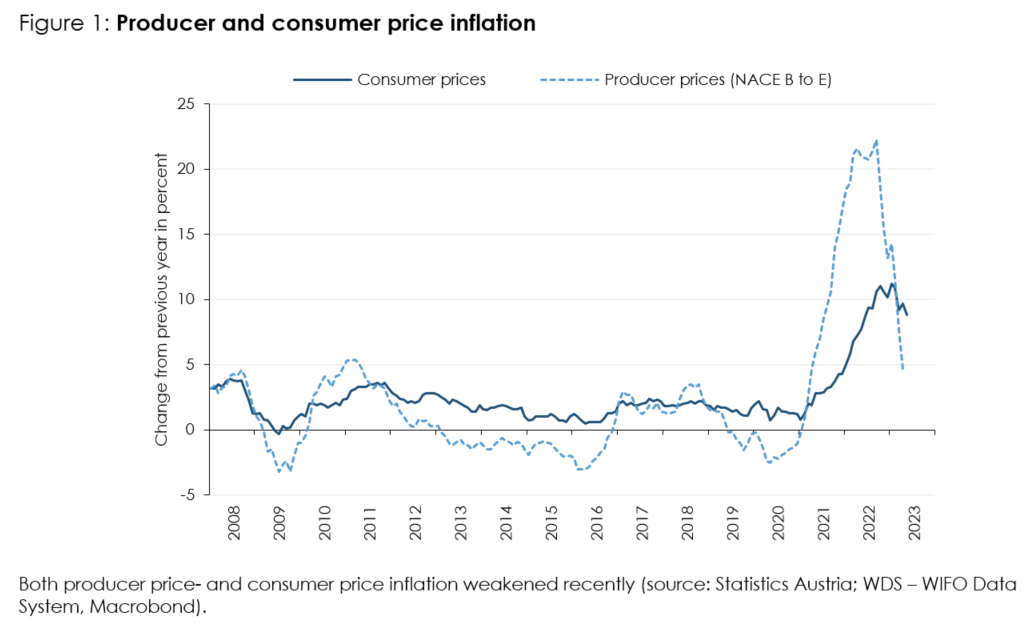
Stagnating Economic Output and Still High Inflation
"The significant weakening of producer price inflation should also further dampen consumer price inflation in the coming quarters," says Christian Glocker, author of the current business cycle report.
The global economy expanded solidly in the first quarter of 2023, driven mainly by strong GDP growth in China after the end of the zero-COVID policy. In the USA, the feared recession has not yet materialised as consumer spending supported the economy. The euro area has not yet returned to growth despite the easing on the energy markets.
The economic development in Austria is similar to that in the euro area. Overall economic activity stagnated again in the first quarter of 2023, for the third quarter in a row. On the supply side, the trade, transport, accommodation and food service activities as well as the manufacturing industry dampened the momentum, while on the demand side, it was declining investment and weak public consumption. Private consumer spending, on the other hand, expanded more strongly than expected.
Leading indicators point to a decline in GDP in the second quarter. The WIFO Business Cycle Index fell in May compared to the previous month. The UniCredit Bank Austria Purchasing Managers' Index even reached its lowest level since April 2020, pointing to a decline in industrial production. Consumer confidence fell again in May. The expansion of private consumption is therefore unlikely to continue.
The economic weakness has so far only been reflected to a limited extent in the labour market. Although unemployment has risen somewhat recently and the number of job vacancies has continued to fall, the rise in employment has continued. According to preliminary estimates, the number of persons in active dependent employment in May 2023 was 48,000 higher than in the previous year (+1.3 percent), after +50,000 in April. At the end of May, around 10,000 more persons were registered as unemployed than a year earlier (+4.3 percent), including those in AMS training it was around 9,000 (+2.9 percent). The unemployment rate (national definition) is expected to have been 5.9 percent (+0.2 percentage points year-on-year).
Consumer price inflation (according to the HICP) was 9.5 percent in April 2023. This means that the increase in the prices of goods and services for private consumption was significantly higher than the euro area average. Only four of the 20 euro countries (Slovakia and the three Baltic countries) had even higher inflation rates than Austria in April. In May, according to Statistics Austria's flash estimate, inflation slowed to 8.7 percent (+8.8 percent according to the national definition). The decline is expected to continue in the coming months, as producer price inflation has already eased. In April 2023, the producer price index was only 4.6 percent above the previous year's level (–1.5 percent compared to March 2023).
Please find the entire business cycle report here (German version).


